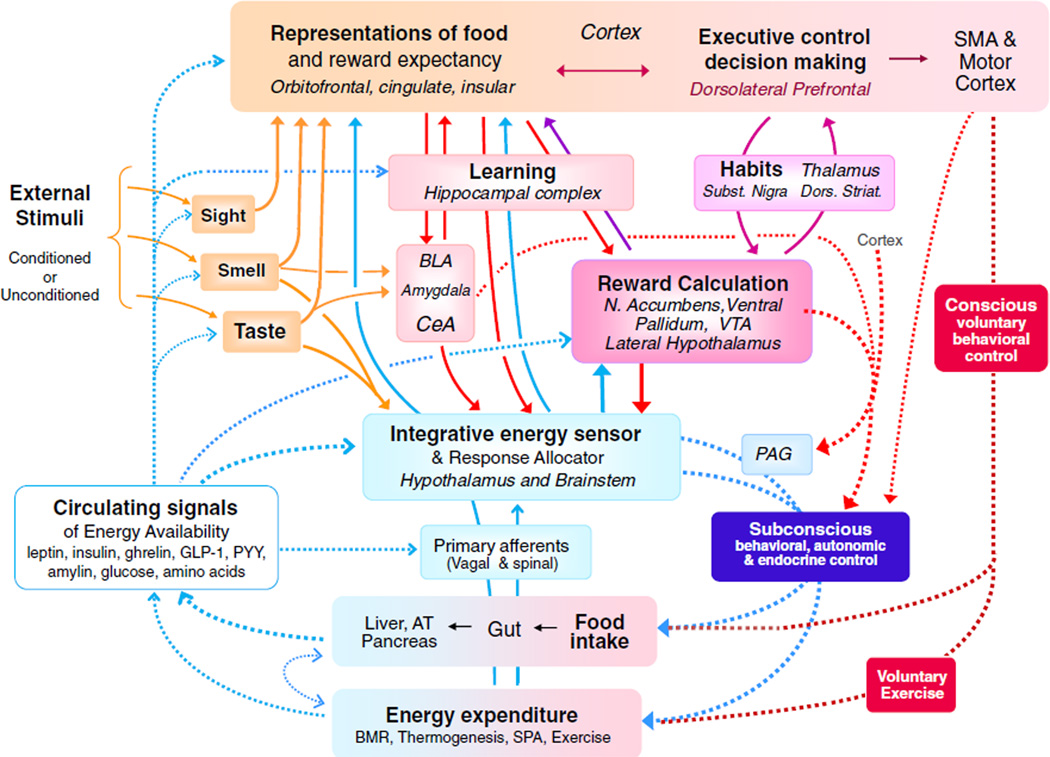Fig. 1.
(colour online) Major neural systems and pathways involved in the control of ingestive behaviour and energy balance regulation with emphasis on interactions between the classical homoeostatic energy regulatory system in the hypothalamus and brainstem (blue boxes and arrows in lower half) and cognitive/emotional brain systems (red boxes and arrows in upper half). Bottom-up modulation of cognitive and emotional processes by metabolic signals and their derivatives is accomplished by (a) circulating hormones and metabolites acting not only on the hypothalamus and brainstem but also on external sensory processing pathways as well as on components of the corticolimbic system (open blue arrows with broken lines), (b) a stream of vagal and spinal sensory information from within the body to all levels of the neuraxis, including the cortex (full blue arrows with solid lines) and (c) neural signals generated by the integrative hypothalamic energy sensor and distributed to areas involved in reward-based decision making (full blue arrows with solid lines). Together, these ascending modulatory influences determine the level of incentive salience directed to specific nutrients. Top-down modulation of food intake and energy expenditure by cognitive and emotional/reward systems is accomplished by (a) direct external (taste and smell) sensory input to the hypothalamic energy sensor and response allocator (dark yellow lines), (b) input from the amygdala, cortex and reward processing systems to mainly the lateral hypothalamus, responsible for conditioned external signals to elicit food intake (full red lines and arrows), (c) inputs from cortex, amygdala and basal ganglia to midbrain extrapyramidal motor pathways (emotional motor system, broken red lines and full arrows) and (d) pyramidal motor system for voluntary behavioural control (broken red lines on the right). N. Accumbens, nucleus accumbens; SMA, supplemental motor area; BLA, basolateral amygdala; CeA, central nucleus of the amygdala; VTA, ventral tegmental area; PAG, periaqueductal gray; GLP-1, glucgon-like-peptide-1; PYY, peptide YY; AT, adipose tissue; SPA, spontaneous physical activity. Adapted from(12).

